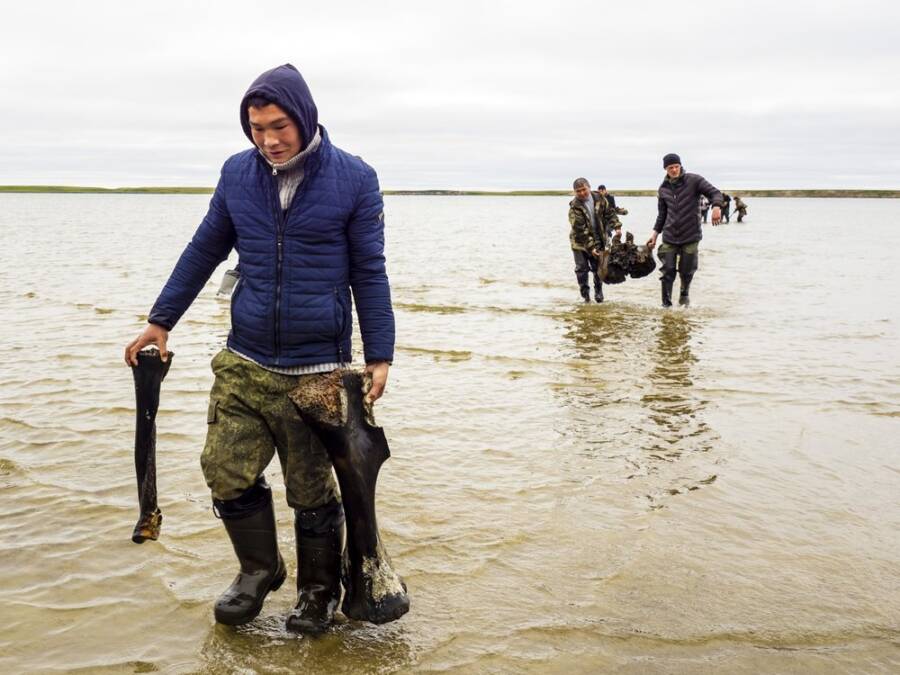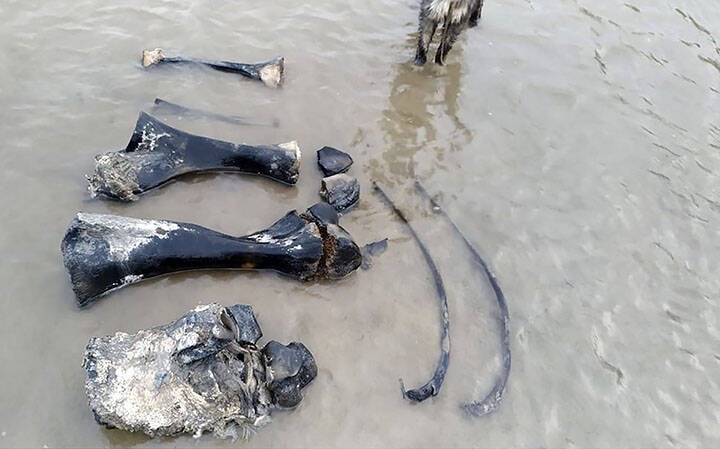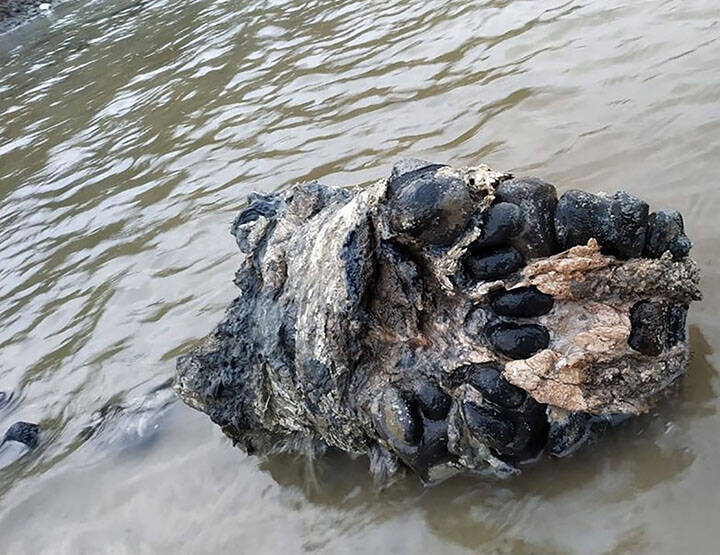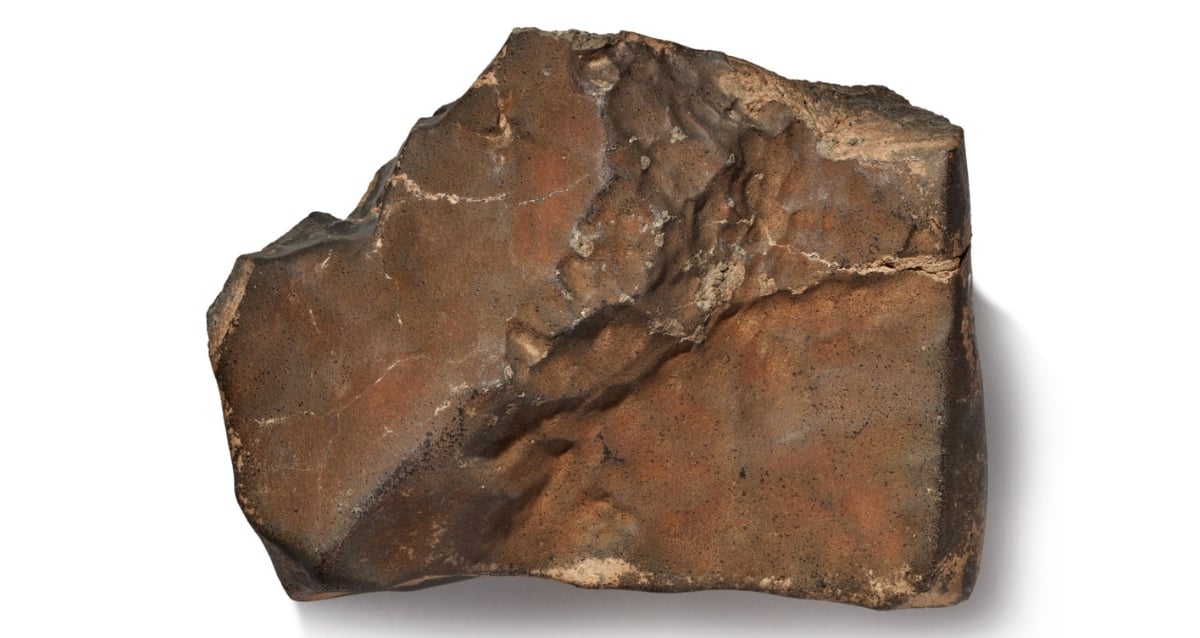“Frozen in Time: Reindeer Herders Unearth Remarkably Preserved 10,000-Year-Old Woolly Mammoth Skeleton with Surprising Ligaments Intact!”
The remains included a skull, several ribs, the lower jaw, and a foot fragment with sinews still intact.

Artem Cheremisov/Gov. of Yamalo-Nenets of Russia Press Office via APScientists have yet to analyze the fossils, but they believe them to be at least 10,000 years old.
Locals quickly alerted researchers, who have since been working together with residents to uncover the rest of the remains likely submerged under the lake’s surface. But it’s also likely that the endeavor will take a considerable amount of time to complete.
Researchers are optimistic, however, as Dmitry Frolov, director of the Arctic Research Center told The Siberian Times, “The whole skeleton is there.”
He added that judging by the size of the fossils, this mammoth was likely young, but only further analysis will reveal just how old it really was.
Woolly mammoths roamed our planet during the Pleistocene era, which lasted somewhere between 2,580,000 to 11,700 years ago. According to scientists, mammoth populations spread across the globe, but most of their fossils in recent years have been uncovered in Siberia and Mexico.
Woolly mammoths in Russia are believed to have largely disappeared about 15,000 years ago, while another population on St. Paul Island is believed to have vanished only 4,300 years ago.

Stanislav Vanuit/TwitterThe bones of what is believed to be a teenage woolly mammoth with soft tissues intact found on Yamal peninsula.
According to Yevgeniya Khozyainova, a researcher from the Shemanovsky Institute in Salekhard, finding the complete skeleton of a mammoth is quite rare. However, several other well-preserved mammoth carcasses have been uncovered in the permafrost of northern Siberia recently as a heat wave which has been ripping through the territory over the summer thaws the thick ice. Archaeologists believe this phenomenon will only continue to reveal more prehistoric specimens.













